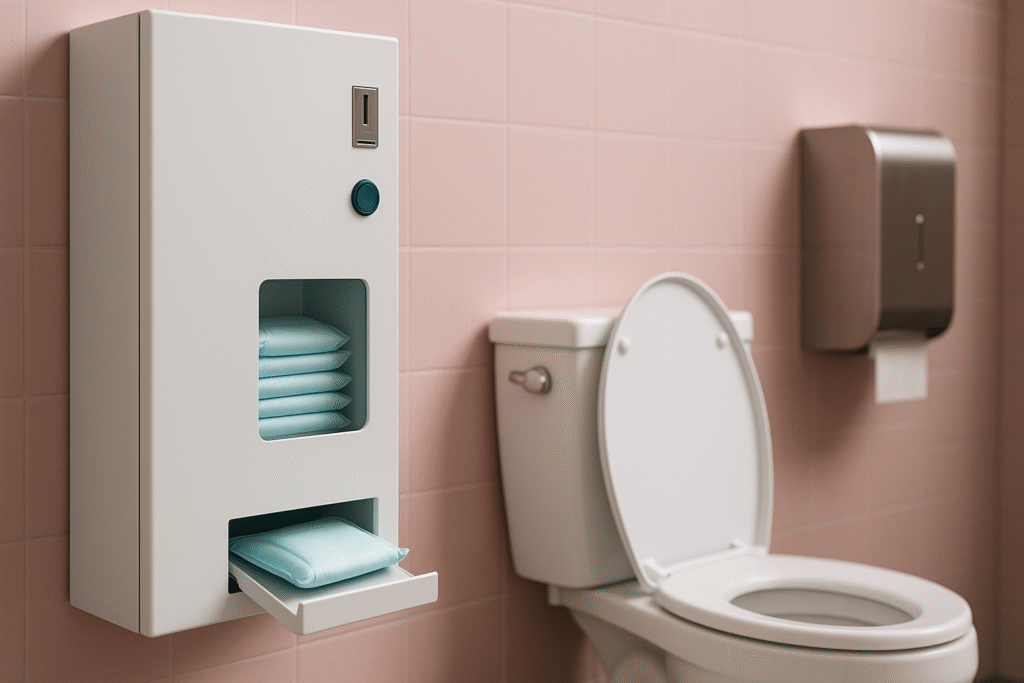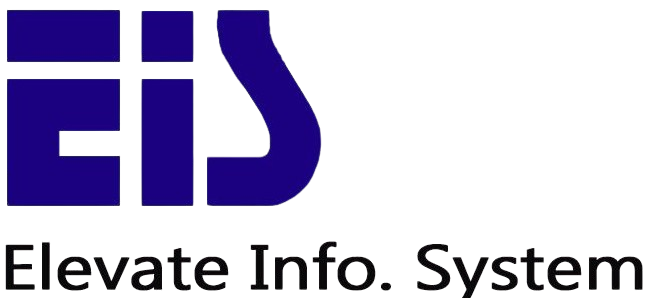
Periods are natural. Yet, in too many schools across India, they’re treated as something to hide — a problem rather than a part of life.
Every month, millions of girls miss school because they lack access to menstrual hygiene products. And in some cases, those absences stretch into days, even weeks, slowly pulling girls out of education entirely.
As someone working with EIS Vending India, I’ve seen how a simple solution — a sanitary pad vending machine — can change that story completely. Let’s explore why period poverty in schools is such a deep-rooted problem, how these machines make a tangible difference, and what it really takes to end menstrual shame once and for all.
What Is Period Poverty and Why Does It Still Exist in India?
Period poverty refers to the lack of access to affordable menstrual hygiene products, safe sanitation facilities, and proper education about menstruation.
According to UNICEF, nearly one in five girls in India skip school during their periods. In rural areas, some even drop out entirely after reaching puberty. The reasons?
- Lack of sanitary pads or access to them in schools
- Shame and stigma attached to menstruation
- Poor toilet infrastructure (no privacy or disposal facilities)
- Lack of awareness among teachers and peers
In one school we worked with in Maharashtra, girls told us they often used old cloth or paper during periods. A few even preferred staying home because they feared leaks or ridicule. That’s not just heartbreaking — it’s preventable.
How Sanitary Pad Vending Machines Help End Period Poverty
A sanitary pad vending machine is exactly what it sounds like — a compact, automated dispenser that releases pads instantly after inserting a coin or token. But its real value goes far beyond convenience.
1. Immediate Access When It’s Needed Most
Imagine a girl who starts her period unexpectedly during class. With a vending machine installed in the washroom or hallway, she doesn’t need to panic or go home. She can quietly get a pad, use it, and return to class — confident and comfortable.
2. Removes the Awkward Barrier
Not every girl feels comfortable asking a teacher or male staff member for help. Machines offer privacy and dignity, giving students control over their own hygiene needs.
3. Encourages Attendance and Confidence
Once pads are readily available, absenteeism drops. Schools that adopted vending machines through EIS Vending India reported up to 80% fewer period-related absences within the first three months.
4. Promotes Menstrual Awareness
Installing these machines also opens doors to education. Schools often host awareness sessions alongside installation — teaching hygiene, disposal, and menstrual health in a way that normalizes the topic.
Why Schools Are the Frontline of Change
Schools shape future generations — and that includes shaping how students think about menstruation.
When a school takes the step to install sanitary pad vending machines, it sends a powerful message: menstruation is normal, and every student deserves comfort and dignity.
Here’s how schools benefit directly:
Benefit | Description |
Higher Attendance | Fewer absences during menstrual days |
Better Health Outcomes | Reduces infections caused by unhygienic alternatives |
Empowerment & Equality | Builds a culture of openness and inclusion |
Positive Reputation | Parents trust schools that prioritize health |
Alignment with CSR Goals | Many CSR programs fund menstrual hygiene initiatives |
In 2023, one of our clients — a girls’ school in Tamil Nadu — installed vending and disposal units. Within a semester, teachers noticed a visible change in confidence levels. Students stopped hiding their periods; they started talking about them.
How Does a Sanitary Pad Vending Machine Work?
The machine is simple, safe, and designed for easy use in schools.
Step-by-Step Process
- Insert Coin or Token: Typically ₹5 or a school-issued token.
- Select Pad Type: Some models allow multi-size options.
- Collect Pad Instantly: No waiting, no staff involvement.
- Dispose Used Pad Properly: Through the attached automatic sanitary pad incinerator, which burns pads in an eco-safe manner.
Key Features of EIS Vending India Machines
- 24/7 access — even during off-hours.
- Tamper-proof and rust-resistant metal casing.
- Easy wall mounting (no extra space needed).
- Power-efficient and child-safe.
- Optional smart version with usage data tracking.
These features are what make vending systems sustainable and school-friendly.
How Sanitary Pad Machines Empower Girls Beyond Hygiene
1. Builds Independence and Confidence
Girls no longer depend on teachers, mothers, or shopkeepers to manage their periods. This small autonomy boosts self-esteem.
2. Breaks the Culture of Shame
Visibility creates normalcy. When girls see vending machines daily, menstruation becomes part of everyday conversation — not a secret.
3. Promotes Health Literacy
Schools often integrate these installations with menstrual education sessions. Students learn the why behind hygiene, not just the how.
4. Encourages Gender Sensitivity
When boys in schools see such facilities being installed, they also learn that periods aren’t taboo — they’re natural. This helps foster respect and equality.
The Hidden Economic and Social Impact
Ending period poverty isn’t just about pads — it’s about opportunity.
UNESCO reports that over 23 million girls drop out of school each year in India after reaching puberty. When they leave education, it affects job opportunities, family income, and even community development.
By installing vending machines in schools, we’re not only protecting health but also investing in the country’s economic future. Every girl who stays in school adds to India’s workforce, innovation, and leadership potential.
Challenges in Implementing Sanitary Pad Vending Machines
While the idea sounds simple, execution can face challenges:
1. Awareness and Funding
Many schools still don’t know about vending options or lack budget.
We once partnered with an NGO in Bihar to pilot low-cost units. After community involvement and crowdfunding, installation became a district-wide project.
2. Maintenance
Machines need regular refilling and occasional servicing. EIS Vending India provides maintenance support packages to ensure continuous function.
3. Disposal Infrastructure
Without proper disposal, hygiene goals fail. That’s why pairing each vending machine with an automatic incinerator is crucial.
4. Cultural Resistance
In conservative areas, there’s still hesitation to discuss menstruation openly. Awareness workshops are key to overcoming this.
How Schools Can Implement the System Step-by-Step
Step 1: Assess Need and Space
Identify where the machine will be most useful — typically near girls’ restrooms.
Step 2: Choose the Right Model
Select between manual, semi-automatic, or smart vending machines depending on student count and budget.
Step 3: Add Disposal Units
Install sanitary pad incinerators beside or near restrooms to ensure eco-friendly disposal.
Step 4: Educate Students and Staff
Conduct awareness sessions about usage, hygiene, and menstrual health. Teachers should lead by example in normalizing discussions.
Step 5: Monitor and Refill
Assign a responsible staff member or vendor partner (like EIS) to manage refilling and upkeep.
Step 6: Review Impact
Track absenteeism rates, student feedback, and usage to measure effectiveness.
How Government & CSR Can Play a Bigger Role
India has already launched several programs to promote menstrual hygiene, such as:
- Rashtriya Kishor Swasthya Karyakram (RKSK) – focuses on adolescent health.
- Menstrual Hygiene Scheme (MHS) – under the Ministry of Health and Family Welfare.
- Swachh Bharat Abhiyan (School Sanitation Initiative) – promotes safe disposal systems.
Corporate Social Responsibility (CSR) can amplify these efforts by funding large-scale installations across schools, colleges, and rural centers.
EIS Vending India has partnered with multiple CSR wings to bring vending machines to over 800 schools so far. The outcome? Fewer dropouts, improved attendance, and measurable health improvements.
Frequently Asked Questions
1. What is a sanitary pad vending machine and how does it work?
It’s a coin- or token-operated device that dispenses sanitary pads instantly, providing quick and private access during menstruation. Most machines work automatically and are safe for student use.
2. Why are vending machines important for schools?
They ensure girls never have to miss class due to their period. It also encourages hygiene, comfort, and open discussions about menstruation.
3. How much does it cost to install a vending machine?
Depending on features and capacity, prices range between ₹12,000 to ₹25,000. CSR programs or NGOs often sponsor installations for government schools.
4. How often should machines be refilled?
Typically once every 15–30 days, depending on school size. EIS provides refilling and maintenance support.
5. Is it safe for younger students?
Yes. Machines are built with safety locks and simple mechanisms. Students can use them independently with basic guidance.
6. Can used pads be disposed of safely?
Absolutely. Each vending machine is usually paired with an automatic sanitary pad incinerator that burns used pads hygienically and odor-free.
The Future: Toward a Period-Positive India
Ending period poverty requires a mindset shift — not just machines.
But machines like these are symbols of progress. They make menstruation visible, manageable, and free from shame.
When a girl in a rural school can focus on her math test instead of worrying about stains or embarrassment, that’s real empowerment.
At EIS Vending India, we believe menstrual equity isn’t a privilege — it’s a right. Every installation is a step toward that vision: a country where every girl can attend school confidently, every day of the month.
Final Call to Action
If you’re a school administrator, CSR head, or NGO leader reading this, the next step is simple:
Take action.
Start by installing sanitary pad vending machines in your schools. Small changes create massive ripples.
👉 Visit EISVendingIndia.com or call our team to explore affordable, durable, and eco-friendly sanitary vending systems made right here in India.
Together, let’s end period poverty — one school at a time.

